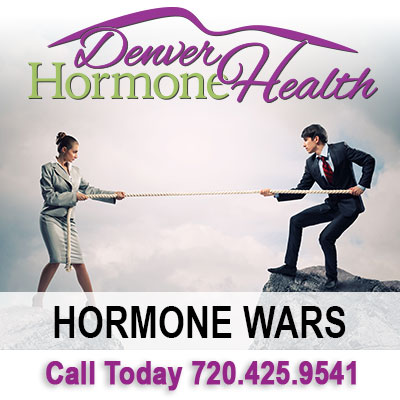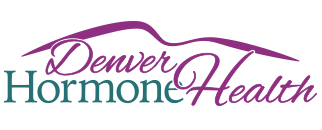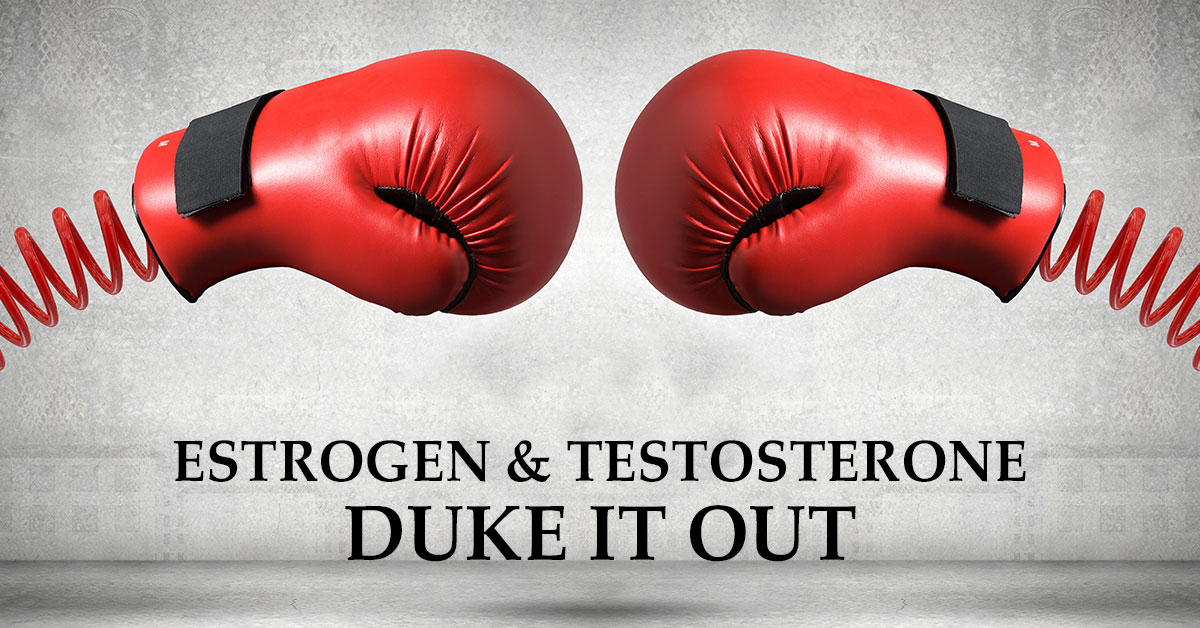ESTROGEN AND TESTOSTERONE DUKE IT OUT
 O.K. boys and girls. Did you know that all of us start life being female? No kidding. The default gender in the womb is female, which is hardly surprising given that the womb is an environment awash with female hormones. We’re born to have both estrogen and testosterone. You’re probably thinking that they’re as different as they can get. Not true. Actually, estrogen and testosterone both share almost identical structural formulas. So where does it go from there?
O.K. boys and girls. Did you know that all of us start life being female? No kidding. The default gender in the womb is female, which is hardly surprising given that the womb is an environment awash with female hormones. We’re born to have both estrogen and testosterone. You’re probably thinking that they’re as different as they can get. Not true. Actually, estrogen and testosterone both share almost identical structural formulas. So where does it go from there?
The Y chromosome that makes a baby a “boy” is an add-one chromosome that starts to act in the womb at around the eight-week of pregnancy. Once a baby’s testicles are formed (by the fifteenth week) they begin making testosterone, too. When he’s born, a baby boy has as much testosterone in his bloodstream as a twelve-year-old boy. Around this time is when brain masculinization takes place. At three months, his high testosterone levels drop off to about a fifth of the level at birth and for the next few years will stay quite low.
Estradiol, along with estrone and estriol are the three estrogen female hormones. Fetuses and female newborns are exposed to estradiol derived from their mother and their own gonads and are then synthesized locally in their brains. The actions of estradiol on the developing brain are part of the determination of sex differences.
So what else don’t you know?
DON’T BLAME THE MESSENGERS
To understand estrogen and testosterone, first you have to understand the function of hormones. A hormone is a chemical substance. It’s secreted by one tissue and travels by way of body fluids to affect another tissue in your body. In essence, hormones are “chemical messengers.” That’s why hormones cause cells, tissues and organs to grow and function differently. When hormones function properly, healthy messages spread throughout the body to create proper development. Estrogen and testosterone are considered the sex hormones.
Testosterone belongs to a class of male hormones called androgens that are sometimes called steroids or anabolic steroids. The brain’s hypothalamus and pituitary gland control testosterone production. The hypothalamus instructs the pituitary gland on how much testosterone to produce, and the pituitary gland passes the message on to the testes.
In women, estrogen is produced mainly in the ovaries, but is also produced by fat cells and the adrenal glands. The term “estrogen” actually refers to any of a group of chemically similar hormones. They are sometimes mistakenly referred to as exclusively female hormones, when as we’ve mentioned above, both men and women produce them.
PUMMELED BY PUBERTY
And then there comes a point where boys and girls are besieged by vatfuls of estrogen and testosterone flooding their bloodstreams as violently as a Mack Truck. The road to becoming a teenager is worthy of Le Mans. Navigating it is daunting, for the kids as well as the parents, far surpassing the terror of the “Terrible Twos”. The kids are unpredictable, frequently smelly and grow out of every item of clothing they have in the space of a few months. Their boredom threshold plummets and they do not seem able to concentrate on anything for more than five minutes at a time. You begin to wonder whether your child is a changeling, swapped with your own by an alien from the planet youtube when you weren’t looking.
This is what signals adulthood. Puberty is initiated by hormonal changes triggered by a part of the brain called the hypothalamus that stimulates the pituitary gland, which in turn activates other glands as well. These changes begin about a year before any of their results are visible. As mentioned above, the male reproductive hormone testosterone and female hormone estrogen are present in children of both sexes. However, their balance changes at puberty, with girls producing relatively more estrogen and boys producing more testosterone. Starting at early as 7 or 8, kids’ bodies begin to produce these hormones responsible for the changes of puberty. All these new chemicals move around inside their bodies turning them from teens into adults with the adult levels of hormones. It’s one of the reasons they become much more interested in sex, sometimes to the point of obsession. Noticed, huh?
WHO’S BODY IS THIS ANYWAY?
The first obvious sign of puberty is a growth spurt that typically occurs in girls between the ages of 10 and 14 and in boys between 12 and 16. Between these ages, both sexes grown about nine inches. The average girl gains about 38 pounds and the average boy gains about 42. Hands and feet grow faster than arms and legs. The nose, lips and ears grow before the head attains its full adult size. Increase in secretions from the sebaceous glands, triggered by the growth hormone androgen is responsible for acne, which affects about 75% of teenagers. Major Yuk and gawkiness!
Girl’s bodies also start to develop breasts or pubic hair. But the major landmark for them is the onset of menstruation. For males, it is the first ejaculation. By age 14, boys’ testosterone levels hit a peak—800% over the level of toddlerhood. It’s enough to turn anyone inside out.
CAUTION: HORMONES FALLING
As teenagers our hormones are on the attack. As men get older, their testosterone levels decline about 1% per year after age 30 taking their muscle mass and libido with it. However, hormonal decline can begin as early as age 20 but the good thing is that it is easier to correct if noticed early. If you get measurements of your hormones while you are young and healthy, it will be easier to identify the ideals levels to restore them to. Though it may seem that these hormones decline because of aging, the opposite is true. Our hormones don’t decline because we age; we age because our hormones decline. Symptoms of declining testosterone also referred to as “Low T” are similar in adult men regardless of their age. These may include:
- Change in erections
- Decreased libido
- Enlarged breasts
- Hair loss
- Increased body fat.
- Fatigue
- Reduced muscle mass
- Depression
- Brain Fog
WHY, OH WHY?
Although it is more rare for young men to suffer from low T, there are many reasons why it may happen:
- High cholesterol levels
- High blood pressure
- Diabetes
- Being overweigh or obese
- Sedentary lifestyle
- Regular smoking
- AIDS
- Anabolic steroid use
- Excessive alcohol use
- Hypothalamic or pituitary disease
- Chronic illness such as liver disease or cancer
If you’re younger, doesn’t seem like much of the above affects you. Whew.
A woman’s production of estrogen starts to decline in her mid-30s. Most women enter menopause between the age of 45 and 55 when menstrual periods stop and hormone levels drop sharply. First to go is your testosterone, then your progesterone and finally your estrodial. At this point a woman’s estrogen production is only about one-tenth the amount it was before menopause. But perimenopause can begin in some women in their 30’s
IT DOESN’T HAVE TO BE A BATTLE
The human body secretes and circulates some 50 different hormones. Low levels of just one hormone can lead to uncomfortable symptoms and may impair production of other hormones, leading to a complex web of imbalance. And to feel our best, balance is everything. This is where bioidentical hormone replacement therapy can help. BHRT is exactly what it sounds like; it is using hormones that are biologically identical to the hormones you naturally make in your body instead of synthetic or animal hormones that do not exist naturally in the human body. Is there somewhere you can go to discuss all this?
Absolutely.
STEPHEN A. GOLDSTEIN, M.D, F.A.C.S. AT DENVER HORMONE HEALTH IS AT THE FOREFRONT OF THE FIELD OF BHRT. THE EXTENT OF HIS EXPERTISE AND EXPERIENCE IS ONLY PART OF THE REASON HE IS THE RIGHT SPECIALIST TO SEE. IT’S ALL ABOUT YOU AND YOUR HEALTH. SO HE STARTS BY LISTENING TO WHAT SYMPTOMS YOU MIGHT BE EXPERIENCING. THEN WITH STATE-OF-THE-ART TESTING, HE CAN DETERMINE YOUR EXACT DEFICIENCIES OR EXCESSES OF DIFFERENT HORMONES IN YOUR BODY. IF YOU NEED HELP, HE’LL KNOW JUST WHAT YOU NEED, CREATING AN INTEGRATED, UNIQUE SOLUTION TO HELP RESTORE THE BALANCE THAT WILL HELP YOU GET RELIEF AND LIVE A HEALTHIER LIFE.
CALL TODAY TO GET STARTED FEELING YOUR BEST.

